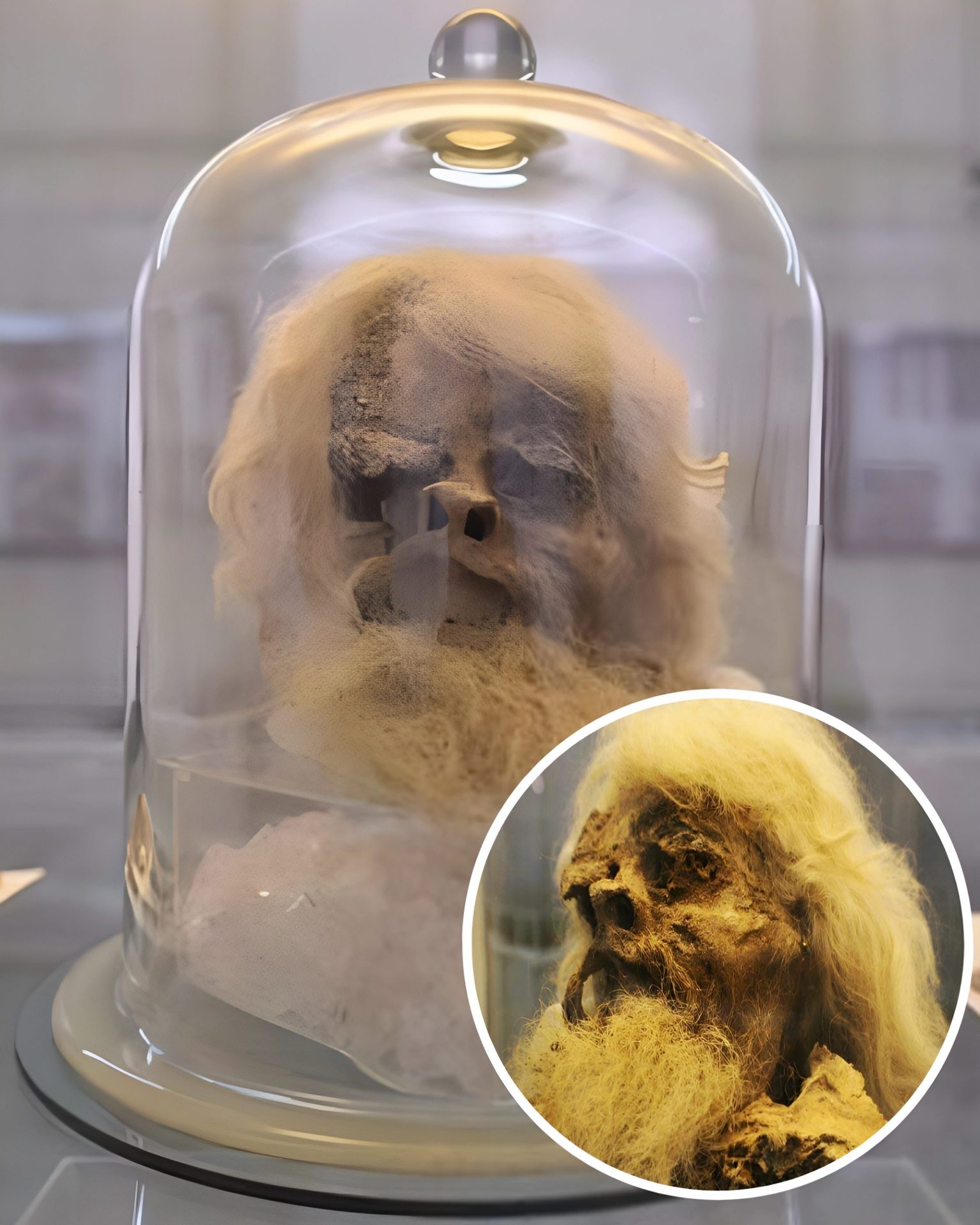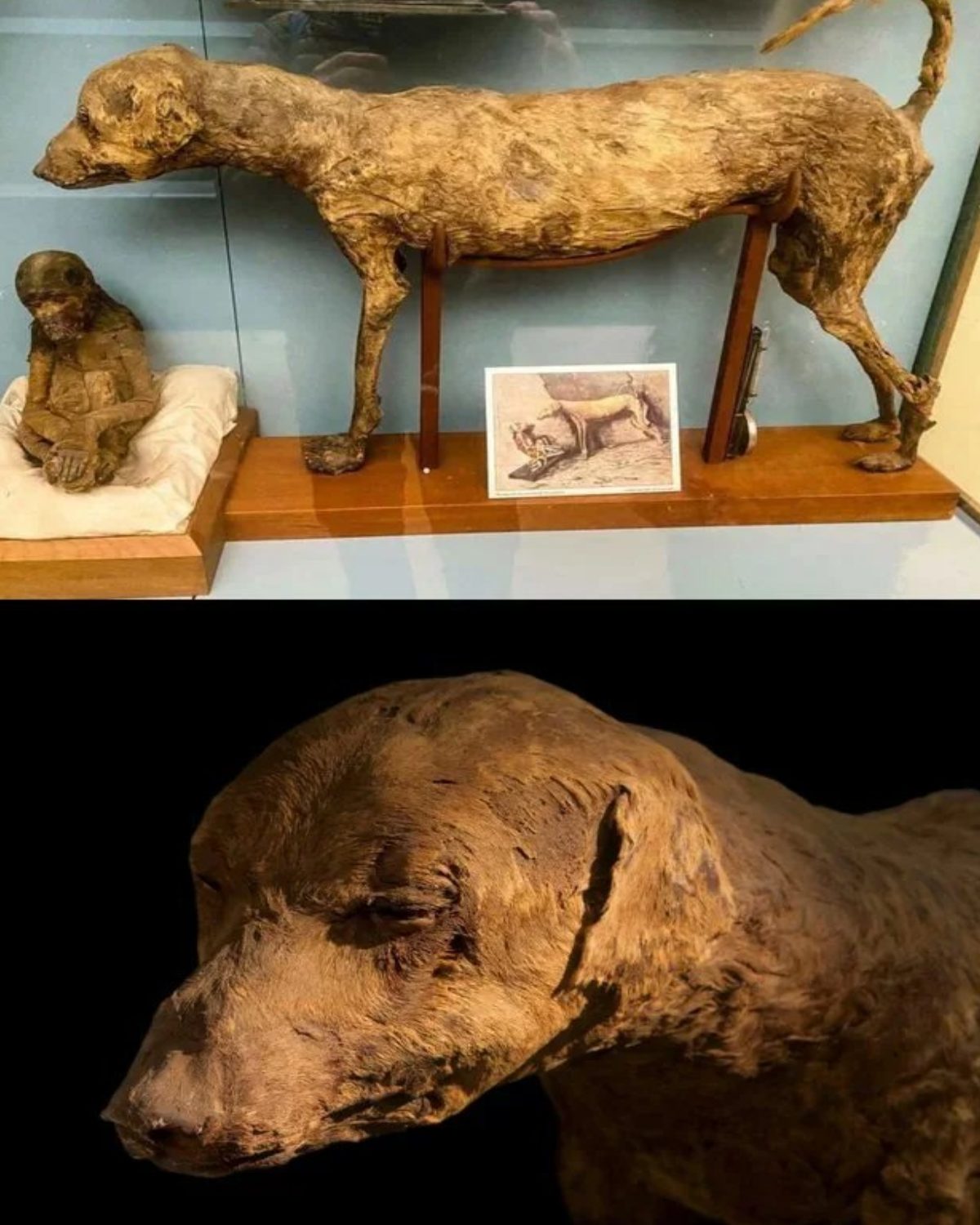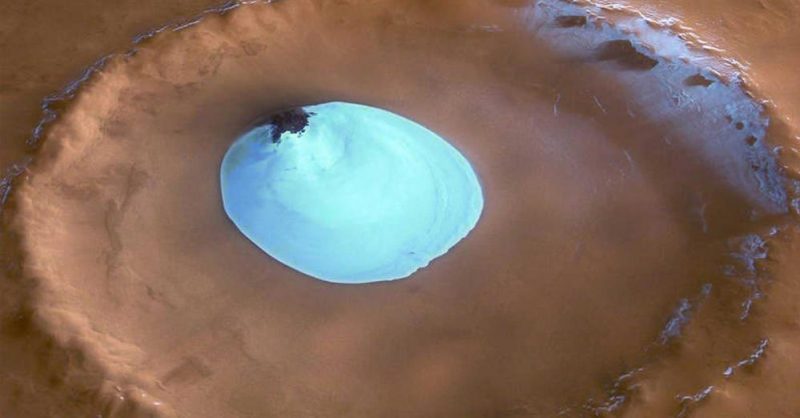
China’s Zhurong rover has found evidence of liquid water on Mars. The discovery could provide “key clues for the future search for life.”
The Chinese Zhurong rover has discovered evidence that liquid water has existed on the red planet for the past 1.4 million years, suggesting that present-day Mars may not be as inhospitably dry as previously thought. Since water is the essential ingredient for life on Earth, the new findings have important implications for the ongoing search for life on Mars.
More than three billion years ago, Mars was home to mighty rivers and huge lakes that could have provided the right conditions for simple life forms, such as microbes. But the planet has lost most of its atmosphere since that golden age, becoming a desiccated shell with a surface exposed to highly damaging radiation.
NASA’s Curiosity rover has shown that Mars was habitable in the past , and its successor, Perseverance, is currently searching for soil samples that may preserve fossilized signs of Martian life. While those missions have produced revelations about Mars’ deep past, Zhurong has now revealed that the planet may have experienced periods of wetness in its recent history.
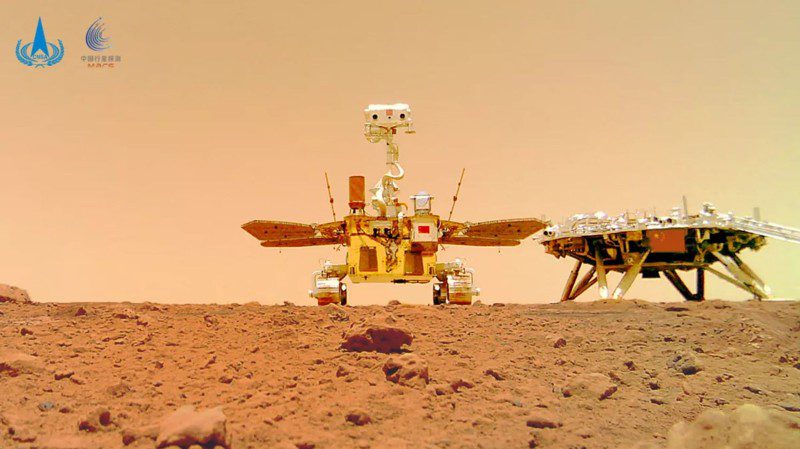
The rover entered a “deep sleep”
Since landing in 2021, Zhurong has traveled nearly 2km across a Martian region called Utopia Planitia , though it has been dormant for nearly a year after it was placed into hibernation to protect it from winter conditions and a major sandstorm. .
While it’s unclear whether the rover will ever wake up, its tantalizing images reveal features in Martian dunes that “were most likely associated with saline water activity, indicating the existence of a water process in the low-latitude region of Mars” that may have occurred as recently as 400,000 years ago,” reports a study published Friday in Science Advances .
According to the study, led by Xiaoguang Qin , a professor at the Institute of Geology and Geophysics (IGG) of the Chinese Academy of Sciences (CAS):
“Is there recently liquid water on the contemporary surface of Mars? This question is critical to understanding the recent climate evolution of the polar caps, the habitable environment, and even the potential for life on Mars. We report bright polygonal crusts, cracks, aggregates and ridges on the surfaces of hydrated salt-rich dunes of southern Utopia Planitia (~25°N) from in situ exploration by the Zhurong rover. Wind and CO2 freezing processes can be ruled out as potential mechanisms. Instead, the involvement of saline water from thawing frost/snow is the most likely cause.”
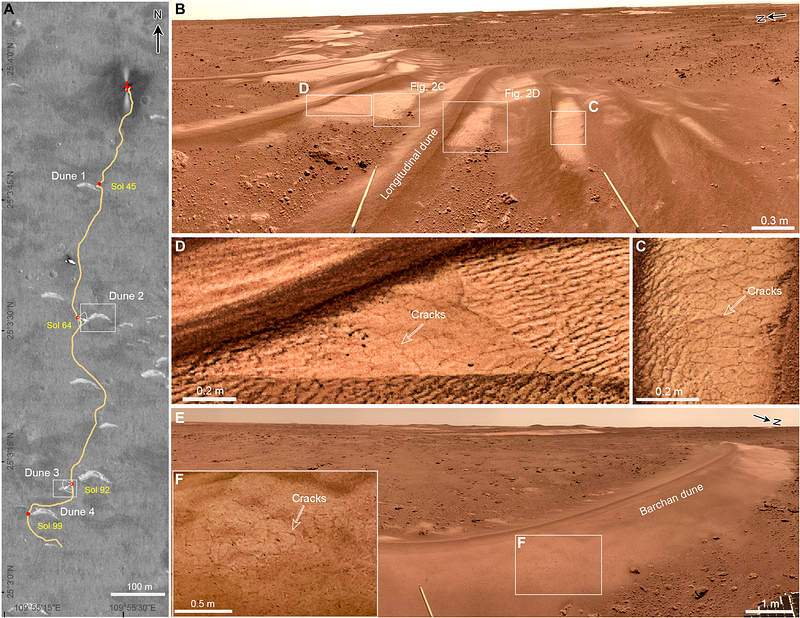
NASA’s now-defunct Phoenix lander detected water vapor from its perch in the north polar region of Mars, but evidence for water at lower latitudes had remained out of reach until now. During his journey across the Martian surface, Zhurong captured observations with his Navigation and Terrain Camera (NaTeCam), his Multispectral Camera (MSCam) and his Mars Surface Composition Detector (MarSCoDe) that helped bring the surrounding dunes into focus.
The data showed the presence in the dunes of chemical substances produced by the interaction with salt water. Geologic features of the terrain, such as cracks and ridges, also appear to have been shaped by water flow in the recent past, though the researchers cautioned that Zhurong’s images have limited resolution and “other unexpected processes” could be responsible for them. some of the findings, according to the study.
Where does this water come from on Mars?
Qin and his colleagues believe it may have originated in the polar latitudes of Mars. Like Earth, Mars spins on a tilted axis, causing its poles to periodically move toward and away from the Sun in a 124,000-year cycle. As the poles warm during wet times, water vapor can move toward the equator and fall as snow in regions closer to the equator.
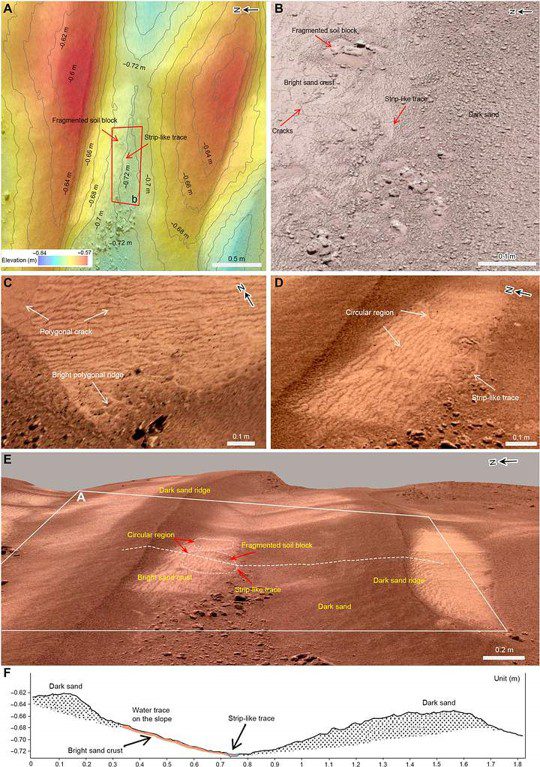
The team believes this polar frost briefly melted into salty water on the ground at low latitudes, creating the chemical signatures and geological formations observed by Zhurong. This mechanism is especially intriguing because it implies that large areas of Mars regularly become wet. Although most efforts to find life on Mars focus on ancient fossils, the new study raises the possibility that extremophile organisms still exist on Mars.
The researchers noted:
‘“If our water hypothesis is true, then the amount of water required to crust over dune surfaces and leave a saline water trail is substantially higher than what has been discussed in terms of transient liquid water (i.e. , water thin films) in previous studies. Our findings provide useful clues for designing future exploration strategies for Mars rovers. As saline water once existed at various latitudes on the surface of Mars, salt-tolerant



